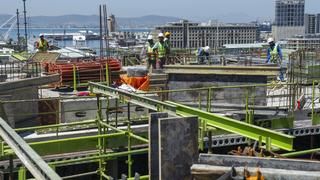The South African government is set to gradually ease the economy back into activity as announced on 23 April by President Cyril Ramaphosa. The country has been subjected to one of the world’s most restrictive lockdowns for five weeks as the government sought to counter the spread od the coronavirus in the country. About 4,793 people have contracted the virus while 90 have died in the country.
 From 1 May 2020, the lockdown will be eased and an estimated one and half million workers will return to work. These among others includes all forestry and related services while in construction and related services, road and bridge projects, other public works civil engineering projects; and critical maintenance and repairs will commence. However, all COVID-19 health and safety protocols will still have to be followed at all times. This includes the observance of guidelines for social distancing, sanitation and hygiene, and use of appropriate personal protective equipment, as determined by the National Department of Health.
From 1 May 2020, the lockdown will be eased and an estimated one and half million workers will return to work. These among others includes all forestry and related services while in construction and related services, road and bridge projects, other public works civil engineering projects; and critical maintenance and repairs will commence. However, all COVID-19 health and safety protocols will still have to be followed at all times. This includes the observance of guidelines for social distancing, sanitation and hygiene, and use of appropriate personal protective equipment, as determined by the National Department of Health.
The trade unions support the measures that workplaces must have COVID-19 risk assessments and plans in place and must conduct worker’s education on COVID-19. Assessments must include identification and protection of vulnerable workers, daily health screening and managing sick workers. Prevention measures include provision of hand sanitisers and face masks, cleaning of work surfaces and shared equipment, good ventilation, safe transport, shift arrangements and canteen controls.
The National Union of Mineworkers (NUM) reiterated its stance on promoting health and safety issues as some workers return to work. ‘‘NUM's strength is ensuring that its members are protected from health and safety hazards and where there is negligence the company must adequately effect compensation,’’ said David Kolekile Sipunzi, NUM General Secretary.
The NUM has been negotiating with the Bargaining Council to assist companies that qualify for support from the government to pay wages during the lockdown. Those that do not qualify are mostly expecting worker’s to contribute their annual leave, however this is not sufficient to cover the extended lockdown and there may be employers that do not pay workers at the end of April.
